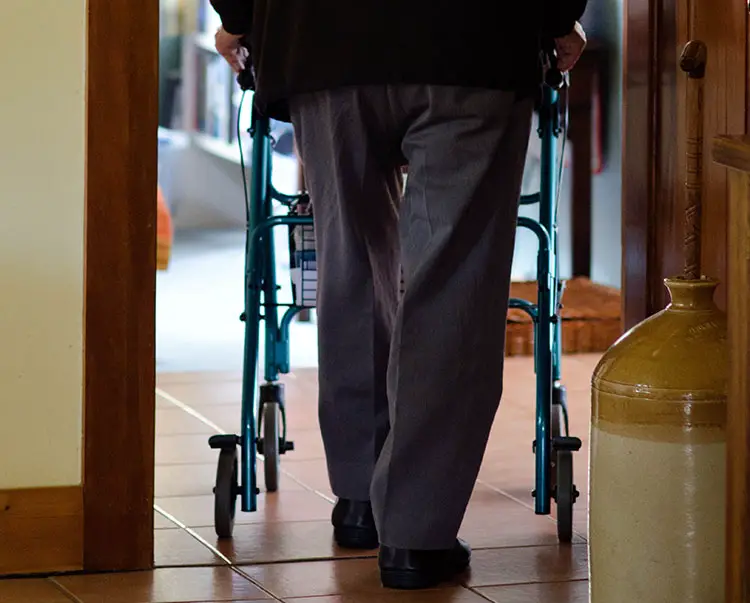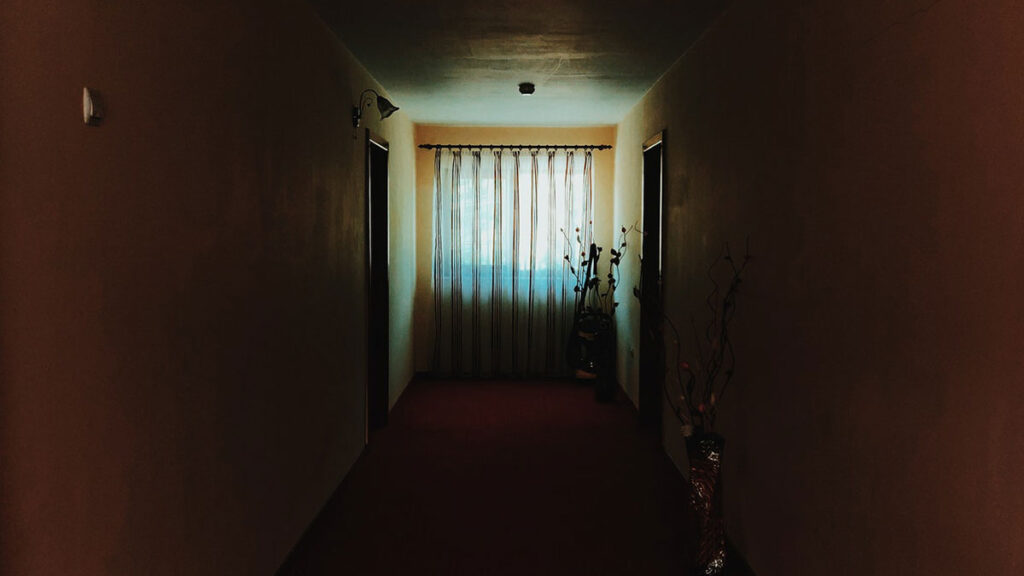When you are trying to dementia proof your home, it’s easy to overlook the actual pathways between the rooms. This article is a continuation of our series on home safety and here we’ll look at Alzheimer’s Disease hallway and entryway safety.
Read this brief article as a general overview of what to consider in the hallways and doorways of your home. Then download and print the checklist below to help you as you then assess the risks in your home.
Download Alzheimer’s Disease Hallway and Entryway Safety Checklist (PDF)
Home Pathway Safety Considerations
If your home has a long hallway, you may have to make some adjustments to provide a safe and easy passage for someone with dementia. If there is no bathroom in your loved one’s bedroom, the hallway will be especially important in leading him or her from his bed to the bathroom, a walk that becomes increasingly difficult as the sun goes down. Here are a few tips and suggestions:
- Plug in a nightlight, or even two. Hallways can be dark even during daylight hours. As in all the other rooms, make sure the lighting is bright enough to see one’s way. Install sufficient overhead lighting, if necessary, as well as nightlights that come on any time the light is too dim to see well.
- THE PERFECT BRIGHTNESS - Our smart night lights provide just the right amount of light to walk around your house without turning your main lights on. Not too bright, not too dim. Juuust the right touch.
- SMART ILLUMINATION 💡 - Automatically turns on as the ambient light becomes insufficient. Intelligently adjusts itself throughout the night. Say goodbye to stubbed toes and say hi to a smarter home.
- As with other rooms, check the flooring. Whether carpet or hardwood, make sure it is even and won’t be tripped on.
- Installing handrails, at least on one side of the hallway, may help an elderly person more easily navigate a long hallway. As previously mentioned, this is especially important to lead the person from the bedroom to the bathroom.
- Bedroom doors may be better off closed, so they don’t draw attention, day and night. Try labeling, whether with words or with pictures, the doors to the rooms that your loved one will go to most often.
- Many older homes have the water heater in a hall closet. If this is the case in your house, put a lock on the door to prohibit access.
- Check for floor vents or registers in which a walker or cane could get stuck. Check your entire house to see if there are any other floor vents that are right in the walkway, covering them as needed.
- Check the width of the doorways. Are the doorways to key rooms wide enough? Will a wheelchair or walker fit through? Hopefully, you won’t have to make any major alterations, but if the doors to the bathroom and other necessary rooms do not allow easy access, you may have to hire someone to widen the entryways.

- While you’re checking the doorways, also check the thresholds to make sure they are level to the floor. Check the entrance to each room. Smooth down or replace thresholds with higher or lower ones as needed to make the flooring flush on both sides of the door. If there is a height difference, the threshold could present a tripping hazard.
- If the hallway is narrow and has pictures on the wall, or if pictures hang close to the handrail, consider moving them and any decorations that can be bumped and knocked off. You might be able to raise pictures that could be fallen into, as well as any decorations that might cause harm.
- If the hallway is wide and long, place a chair or bench halfway for resting. Most hallways probably will not accommodate a chair, however. In that case, is there room for one immediately at the end of the hall? Depending on your home’s layout, you may or may not be able to put a chair at each end of the hallway.
- Entryways must also be considered. They must be freeof clutter. Remove items that might be in the way, such as decorative items, umbrella stands, and errant shoes that may have been left by family members. If there is room, placing a chair would be beneficial to provide a resting place for the elderly person who has just come in the door.
Alzheimer’s Disease Hallway and Entryway Safety Summarized
The hallways and entryways may seem like insignificant areas to consider in safe proofing a house for the person with Alzheimer’s. They are very important areas, however, as they lead to all the other rooms of the house. The hallway will play an important role in how your loved one navigates from the bedroom throughout the rest of the house. Similarly, the entryway is the first part of the house that is seen, inviting the person to a safe, secure home.
This is the sixth article in this series. Further articles will cover other rooms:
Check each of these articles as they become published to continue your home safety assessment.
Want to read my complete guide? Check out Staying Home.
- Grant, Derrick (Author)
- English (Publication Language)


![Vont 'Lyra' LED Night Light, Plug-in [6 Pack] Super Smart Dusk to Dawn Sensor, Night Lights Suitable for Bedroom, Bathroom, Toilet, Stairs, Kitchen, Hallway, Kids, Compact Nightlight, Cool White](https://m.media-amazon.com/images/I/41JEgmDjzEL._SL160_.jpg)
